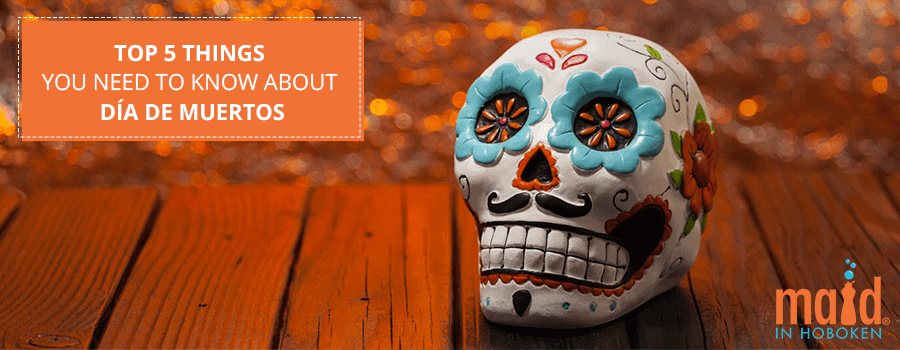
The Day of the Dead, or Día de Muertos, is one of Mexico’s biggest celebrations and probably one of the most recognizable worldwide. In the last few years, it has also become really popular in the United States, and how could it not! It is colorful, joyous, full of life-affirming traditions, and very beautiful iconography. But the Day of the Dead is much more than that. It has been officially recognized by UNESCO as an intangible Cultural Heritage of Humanity, so it’s important to preserve its essence and meaning no matter where it’s celebrated.
We want to share the Día de Muertos’ importance with you, so we made a list of things people should remember about this beautiful and joyous tradition. From its origins to the essence that survives to this day, here are five things you should know about Día de Muertos.
1. It’s Rooted in Thousands of Years of Tradition
Before the arrival of the Spanish, the many distinct civilizations that thrived in pre-Hispanic America each venerated the dead for thousands of years, especially the Aztecs, Toltecs, and other Nahua people. In fact, mourning the dead was considered disrespectful in those cultures since death was considered just another phase of life, and deceased people were still thought of as part of the community, actively interacting with their living counterparts through memory and spirit. Though the modern version of Día de Muertos is a mash-up of many different rites, its very essence comes from how these ancient cultures understood death itself.
2. It’s The Result of Religious Syncretism
Like we mentioned in the above paragraph, Día de Muertos is the result of thousands of years of different cultures’ reverence for the dead coming together. However, the final catalyst for turning the festivity into what it is today was the influence of Catholicism. This includes the dates when the celebrations take place, November 1 and 2, which are All Saints’ Day and All Souls’ Day on the Catholic calendar, and the fall maize harvest, all very important times of the year during colonial times. Many other elements, such as the altars, the food, and the images of the deceased are all European influence.
3. Food is an Essential Part of It -- Though Not for the Living
Traveling from the land of the dead to the realm of the living can work up quite an appetite, even for the deceased. That’s how the tradition goes in Mexico, at least, and it’s the reason why the altars are also adorned with the dead loved one’s meals as offerings. However, that doesn’t mean that the living won’t get to enjoy something delicious, as Pan de Muertos is another staple of the celebration; this is a sweet bread that often features anise seeds and a light orange flavor and is decorated with little teardrop-shaped dollops of dough on the surface, symbolizing sorrow. All in all, food is one of the most important Day of the Dead traditions.
4. It’s a Day to Celebrate and Mingle, Not to Mourn
While the observance of Día de Muertos at home can be more private and solemn, it is very much a public, community-driven, and joyous celebration. This, again, comes from the pre-Hispanic perception of death and the belief that the spirits of the dead would feel insulted if they found everyone in a dour mood. Think of it this way: how would you feel if you traveled an insanely long distance to see your family but they were all in mourning? That’s why Día de Muertos is supposed to be a colorful party that is, ironically, very life-affirming.
5. Each Region Has Its Own Flavor
Despite being such a big part of Mexican culture, Día de Muertos is far from being a homogenous celebration. While sharing many of the most iconic elements, such as the altars, the flowers, the colorful skeleton decorations and more, different parts of the country (and others in Latin America) have their own local traditions and customs, such as marching through the streets carrying images of their dead loved ones, visiting them at the cemetery at specific parts of the day, or making a feast with all the neighbors. It’s always fascinating to learn about these by visiting different parts of Mexico!





